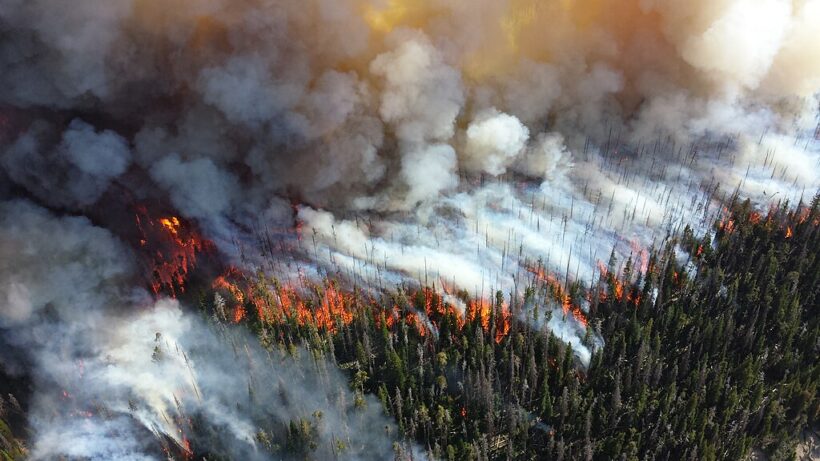In recent years, many people have learned first-hand how destructive wildfires can be. Even if they weren’t forced to evacuate their homes, millions in Canada and the United States have had to breathe acrid air polluted with wildfire smoke.
By Cristen Hemingway Jaynes
A new study has found that an increase in the severity and frequency of wildfires in the western U.S. from the years 2000 to 2020 was the primary cause of worsening air quality in the region, with an increase of 670 premature deaths each year.
The researchers found that wildfires have frustrated successful federal efforts at improving air quality, mostly through the reduction of automobile emissions, a press release from the University of Iowa said.
“Our air is supposed to be cleaner and cleaner due mostly to EPA regulations on emissions, but the fires have limited or erased these air-quality gains,” said Jun Wang, co-author of the study and professor of chemical and biochemical engineering at the University of Iowa, in the press release. “In other words, all the efforts for the past 20 years by the EPA to make our air cleaner basically have been lost in fire-prone areas and downwind regions. We are losing ground.”
The study, “Long-term mortality burden trends attributed to black carbon and PM2.5 from wildfire emissions across the continental US from 2000-2020: a deep learning modelling study,” was published in the journal The Lancet Planetary Health.
The research team calculated concentrations of black carbon on a grid of the continental U.S., the press release said. Black carbon is a fine-particle air pollutant associated with heart and respiratory disease.
The team found that concentrations of black carbon have increased 86 percent each year, primarily because of wildfires.
The western U.S. — the region most affected by Canadian wildfire smoke and where many wildfires in the U.S. originate — had the highest rates of premature mortality during the study period.
“Wildfires have become increasingly intensive and frequent in the western USA, resulting in a significant increase in smoke-related emissions in populated areas. This increase is likely to have contributed to a decline in air quality and an increase in attributable mortality,” the authors of the study wrote. “Reducing fire risk via effective policies besides mitigation of climate warming, such as wildfire prevention and management, forest restoration, and new revenue generation, could substantially improve air quality and public health in the coming decades.”
The wildfires affected the Midwest as well, but the eastern U.S. did not have any major air quality declines from 2000 to 2020.
The team used data from 500 air quality monitoring stations on the ground, as well as satellite data, to determine the black carbon concentrations and estimates of premature deaths. To make up for the lack of coverage from surface stations in some areas, the researchers used “deep learning” — where computer systems cluster data to make accurate predictions — in calculating black carbon concentrations. The formula combined data on population density, black carbon exposure and lifespan.
“This is the first time to look at black carbon concentrations everywhere, and at one-kilometer resolution,” Wang said.
Lead author of the study Jing Wei, who was a postdoctoral research scholar in the research group in Iowa led by Wang, said the successes in lowering human-caused emissions have been offset by the uptick in severe wildfires.
“The increasing number and intensity of wildfires in the U.S. counteract or even overshadow the reduction in anthropogenic emissions, exacerbating air pollution and heightening the risks of both morbidity and mortality,” said Wei, who is now an assistant research scientist at the Earth System Science Interdisciplinary Center at the University of Maryland, in the press release.
Cristen is a writer of fiction and nonfiction. She holds a JD and an Ocean & Coastal Law Certificate from University of Oregon School of Law and an MA in Creative Writing from Birkbeck, University of London. She is the author of the short story collection The Smallest of Entryways, as well as the travel biography, Ernest’s Way: An International Journey Through Hemingway’s Life.










